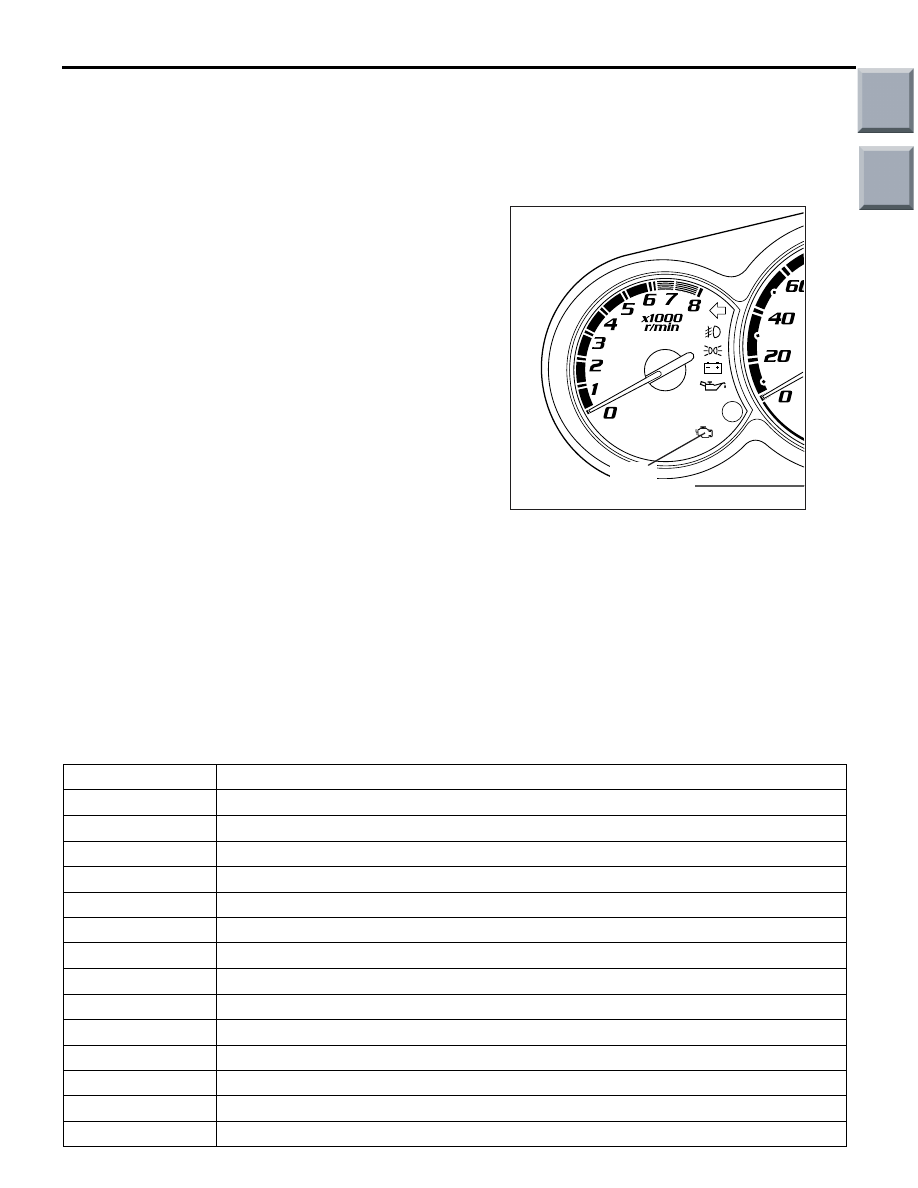Mitsubishi Colt Ralliart. Manual - part 671

TROUBLESHOOTING
MULTIPORT FUEL INJECTION (MPI) <4G1>
13B-9
TROUBLESHOOTING
DIAGNOSIS TROUBLESHOOTING FLOW
M1131150001367
Refer to
, GROUP 00
− How to Use Trouble-
shooting/Inspection Service Points
− How to Cope
with Intermittent Malfunctions.
DIAGNOSIS FUNCTION
M1131155501851
ENGINE WARNING LAMP (CHECK
ENGINE LAMP)
The engine warning lamp illuminates in the event of
an abnormality in any of the diagnosis items related
to the Multipoint Fuel Injection (MPI) system listed
below. Check diagnosis code outputs both when the
lamp stays illuminated and when it lights up or
flashes while the engine is running. Even when there
is no problem, the lamp is caused to illuminate for
about 5 seconds after turning the ignition switch to
the ON position for the blown bulb checking pur-
poses.
ENGINE WARNING LAMP INSPECTION ITEMS
AK402082AD
Engine
warning lamp
Code No.
Diagnosis item
P0090
Fuel pressure solenoid valve system
P0100
Airflow sensor system
P0105
Barometric pressure sensor system
P0110
Intake air temperature sensor system
P0115
Engine coolant temperature sensor system
P0122
Throttle position sensor (main) circuit low input
P0123
Throttle position sensor (main) circuit high input
P0125
Feedback system monitor
P0130
Oxygen sensor (front) system
P0135
Oxygen sensor (front) heater system
P0136
Oxygen sensor (rear) system
P0141
Oxygen sensor heater (rear) system
P0170
Abnormal fuel system
P0201
No. 1 injector system
Main
Index
Group
TOC